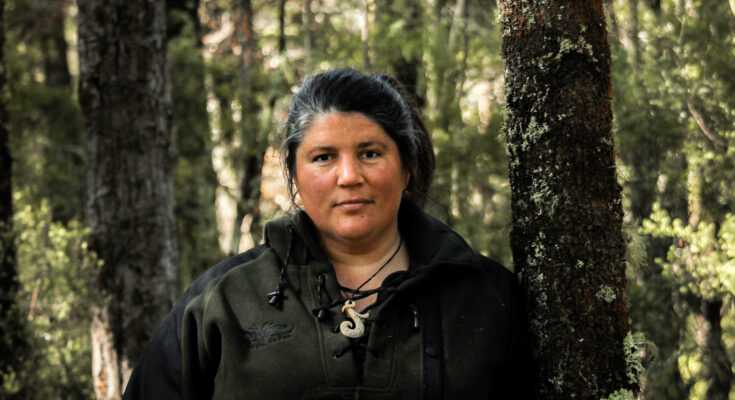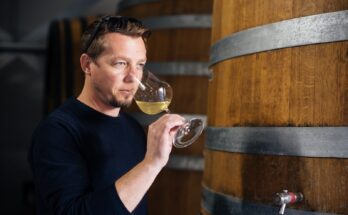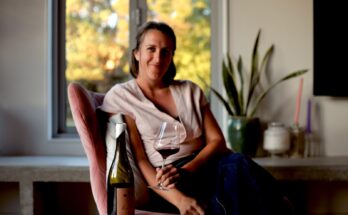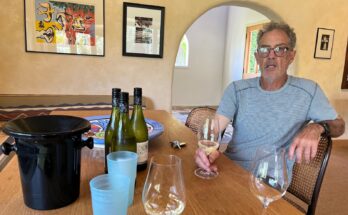When I dropped into Finer Wines recently and talked about a visit to Gladstone with Jim, he suggested a visit to Johner was essential, but that I should also definitely try and get an appointment at Urlar, who don’t have a Cellar Door. Now I’d tried a couple of Urlar wines, including the sumptuous Champion Sweet wine of Show at the Easter Show last year. But, more importantly, I’d heard only great things about their winemaker, Jannine Rickards. I caught an Instagram-Live session with Candice Chan and Jannine last year in which she talked about her own label ‘Huntress’ and disappearing into the bush for days – which just reinforced my idea to find out more about this fascinating character!
Jannine Rickards: Angus planted the vineyard in 2004. It’s just directly out here in four big squares – we’ve got quite a bit of heavy clay in the soils just through here. We’ve got Sauvignon, Riesling, Pinot Gris and then over the far side next to Paddy Borthwick’s driveway are different Pinot clones on various rootstocks. It’s 30 hectares planted and we’ve also got a paddock that currently has Highland cows and our compost-making area in it, that could be planted up. But we are looking at purchasing another 5 hectares of land in the future, where the soils are a bit lighter textured, down near the Cliffs vineyard.
We were purchased by Nishi Brewing two years ago. They’re eighth generation Sochu producers and they have expanded in Japan – into sake, whisky and gin. All in independent locations but in the same area. We have a Japanese gentleman who manages Urlar – he’s based in Nelson and he comes up when he needs to, but apart from that we’re left to our own devices. We’re a pretty small team. Bevan’s been our vineyard manager for nearly seven years. We’ve got a full time crew of ten of us including Kohei, the Manager.
In the three years I’ve been here, I’ve seen what works and what doesn’t a little bit more. Really looking forward to expansion of the winery, which starts after harvest in 2021. A bit more room to move. We have expanded into a lot of different wines that just go to Japan under the Manager’s label. More natural, Pet-Nats, skin-fermented Pinot Gris and Sav. So I make about 8-10 different wines for him in small volumes. Never thought I’d be making Pet-Nat.
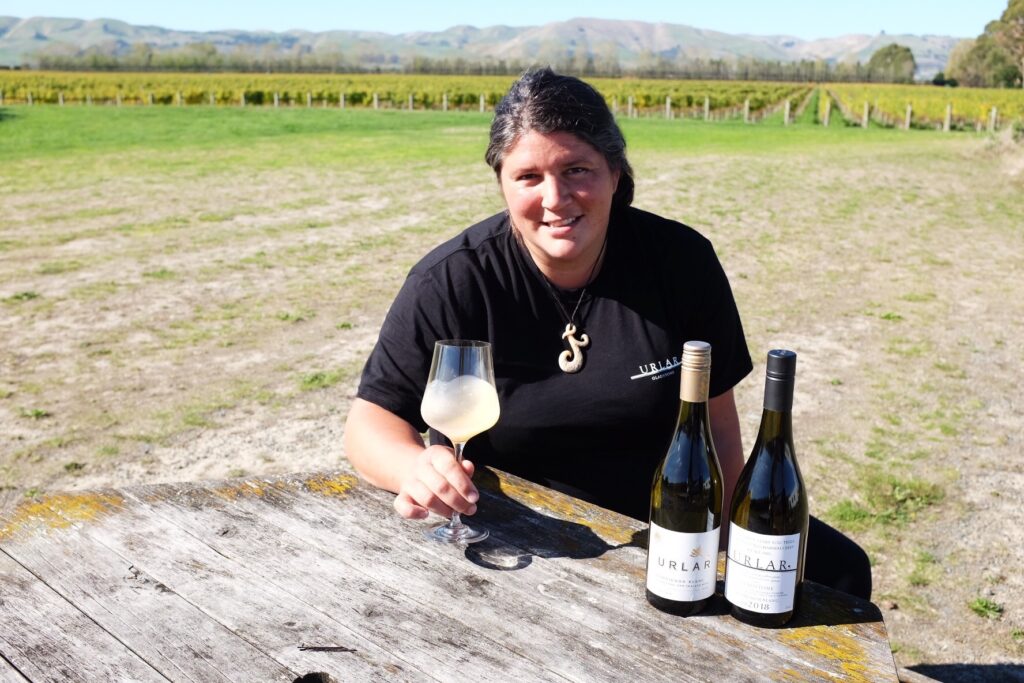
WineFolio: I’ve been over at The Supernatural and that has helped me get more of a handle on natural wines. Without some guidance that can be a bit daunting to someone used to ‘traditional’ wines.
JR: It’s fun because it gives me a lot of freedom and expression, just to have a go at different things. And the Japanese market really likes that. They love natural wines – the cloudier the better. We don’t disgorge our Pet-Nat or anything like that. They’re happy with that solid content. My favourite Pet-Nat is probably Black Estate and they do disgorge it. I just like the clarity. It’s fun and interesting to see what they do in different vintages.
WF: This Sauvignon Blanc is gorgeous! I’m so pleased that Craggy Range are going to be putting in a decent amount of Sav on Te Muna Road, because I really like Wairarapa Sauvignon Blanc. It’s identifiably Sauvignon Blanc – in fact, I’d say it’s obviously New Zealand Sauvignon Blanc. And it’s just ‘different’ from the style that everyone knows from Marlborough. I love it, and this is excellent.
JR: I really hadn’t worked with Sauvignon for some time before I came here, and then we’ve got such a huge amount planted. I carried on with what the previous winemaker had done a little bit; but I also brought in some skin fermentation. It was a few percent in ’18. Just for the texture and the finish on the palate. It brings some interest. No matter what you use, the fruit always seems to express this real citrus, lime kinda salty character. I thought let’s embrace that because that’s way more interesting to drink.
WF: I still really rate Sauvignon. I know a lot of people steer clear of it, but I like to give it go. Another one that I also think, done well, is an interesting wine, is Pinot Gris. I like interesting and character. I rate that over and above what things “are supposed to be”, so skin-contact in whites like Gewurz and Sav is all good by me. I think that gradually, consumers are picking up on things like that – and also the “whole bunch” idea that they are now hearing about in Pinot Noir? Can you talk us through that?
JR: Whole cluster is just hand picked Pinot Noir fruit in the bottom of the fermenter. You’re bringing in a different tannin from the stems through the fermentation.
At the final stages of alcohol fermentation when the stems are sitting in the solution, you can pick up those greener whole-bunch characters. Generally when people use a higher amount of whole bunch components in their Pinots they press earlier just so you don’t get that stemmier push. It brings in aromatics – you get floral lift, a concentration and density – depending on the fruit.
We didn’t get to do much this year because we were pushed for space, and I do love the couple of portions that have whole bunch. I’m definitely going to do a bit more if the season allows. I did some fun whole cluster carbonic stuff for a rosé which we’ll try.
Our barrel-fermented Sauvignon Blanc has a portion of skin fermentation in it. Traditionally it’s all been old French oak barriques, but since 2018 we’ve got a Fuder, a 1000 litre, which is quite lovely, and a few newer barrels in the overall blend. 10 months on gross lees, partial malo, sulphured on taste. They’ve been making this wine since 2013 and I really like it. I think that barrel-fermented Sauvignon or Sauvignon-Semillon blends are some of the most amazing food matches I’ve ever had. It’s quite versatile and really shines when you get the right food pairing.
WF: I love the different conversation that it allows you to have about Sauvignon Blanc. It’s a serious wine. I think it adds complexity, interest and character. It adds depth, you’re not just getting that upfront personality from the grape. And beautiful to age. When I was at Lime Rock earlier I picked up a 2005 Sauvignon Blanc.
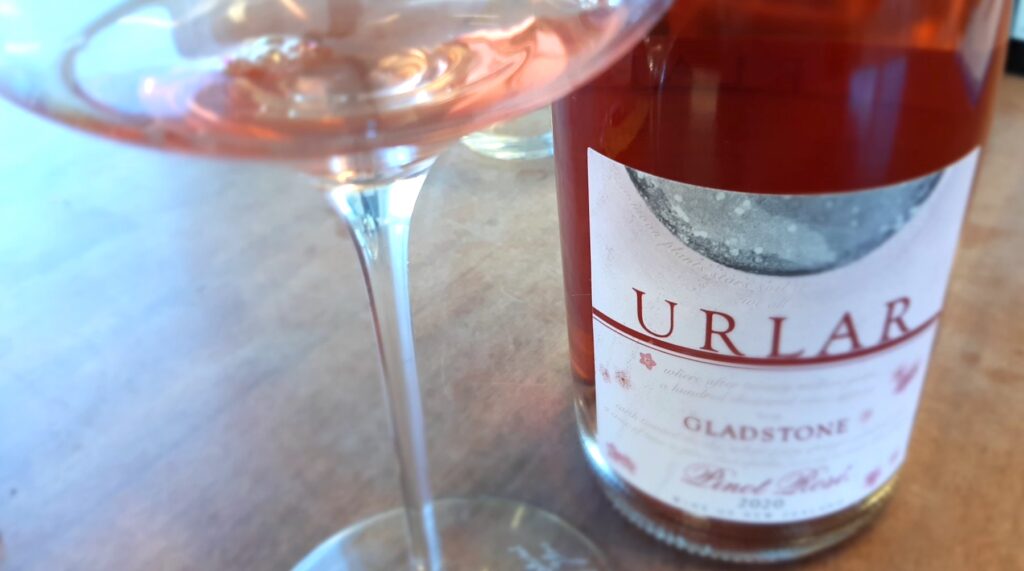
JR: Isn’t that such a great site. I remember their first vintage of Pinot when I was working at Sileni.
WF: Can you talk me through the new label design?
JR: The owner has quite a clear direction in where he wants to go, and packaging is quite important to the Japanese. It’s part of a story – there’s a lot of writing on there. There’s the horizon of the planet, and how long we expect to be on this land. Nishi is eighth generation, so he’s looking forward and long term. We’ve had mixed reactions – only the Pinot Noir has been shown in New Zealand, and people either love it or hate it – but that’s often the way.
We’ve also changed a little bit the amount of wines that we make. With the previous owner, we used The Mediator which is a Pinot Noir priced just over $30 retail. A lighter fruit concentration and just an introduction to Wairarapa Pinot I guess? And for 2020 we’ve made a white, and it’s a blend. The idea was to have something to match with the Pinot. We’re leasing and converting to organics, the Cliffs vineyard. So I couldn’t use that in our Urlar range which is all BioGro certified organic.
The Mediator white should be aromatic, fresh and energetic. It’s Pinot Gris, Viognier, Riesling, touch of Chardonnay. A little bit of Viognier done on the skins. I make a white blend for my own label, and have had some interesting conversations about white blends, but that one is really different and all skin-fermented.
WF: I think people like them when they have reason to come into contact with them. Like at a Cellar Door for example. But it’s tricky one to get people to buy retail, or outside of that environment. They’ll happily buy a blend of reds, but a white? It’s not a thing here in New Zealand is it?
JR: I fell in love with Viognier when I was working in Gisborne. Millton Viognier is incredibly full and rich – you have a couple of glasses and it’s so powerful.
It’s got a little pithiness, nice texture and a tonic-y refreshing finish.
WF: Yes, that drying, slightly tart finish – with a bit of juniper almost to it.
JR: You should go and see Reid & Reid, they’ve got a distillery in Martinborough. They do a gin that’s intensely junipery. Also in Martinborough, the wine merchants has an incredible range. And Mesita will be open tonight, they do small plates and have some interesting smaller producers on their list.
WF: Is it central?
JR: (laughs) Yes everything’s central – you’ve been to Martinborough before?
Rosé. Urlar’s first rosé! Everyone’s making rosé, so I made one too. Pinot Noir certified organic, from our vineyard – 115 clone mostly, the clone 5 is the carbonic portion. Hand picked it, put it in the fermenter, gassed it up, wrapped it up, left it, then foot stomped it after 5 days. Then fermented it and aged in old french oak.
WF: Glad to see that’s a rosé taken seriously. I’ve heard some horrible stories about rosé. And that’s a lovely, interesting, aromatic wine. I love that – I’m a late starter with rosé. Has to be dry. Carbonic maceration sounds a bit scary! Tell me about that.
JR: It’s how they used to make Beaujolais. Trust in the fruit, if it’s clean. It’s going to start fermenting within the berry, and then those bright, bouncy, strawberry aromatics. A really nice blending component. I wouldn’t want a rosé with too much more of that but it’s a nice balance with the texture.
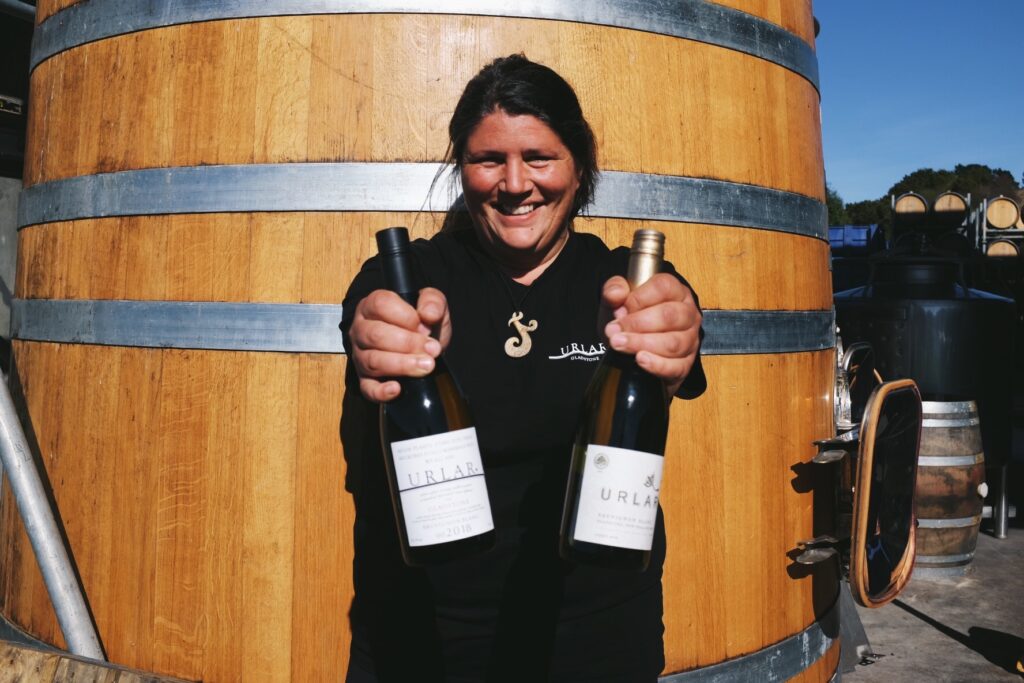
WF: It’s got a lovely dry finish, but has a sense of sweetness – particularly on the nose. That’s got everything in the right place.
JR: This wine will go into the local market quite a bit, and we’ve had a really good response to it. We put some on a keg in a new bar in Masterton called Saint Sebastian, and from there we’ve had a lot of enquiries.
WF: There’s a place in Hastings now with wine in a keg – Halcyon Days were saying they’ve got one in there. I love that because it’s local.
JR: And have you heard of Everyday Wine on Cuba Street? Dan, who has Wine Diamonds and he also has quite a lot of wine on keg down there.
WF: I’ve heard of Cult Wine. Have you read Jules’ book? You’re in it! I was the first person to receive it, read it and review it. I read it the day I got it – well, it’s about my favourite subject. I emailed him and said I’d read it, but was thinking about what to say in a review. At the back of the book there’s a section called something like ‘The dark side of NZ wine’ and he talks about things like sexism in the industry.
JR: I was talking with a table full of fervent feminists last night actually and it came up. I’ve had so many woman mentors through my career that it’s never really been a thing for me to worry about. I’ve seen it and experienced it – in France for example.
Let’s do a few Huntress wines? I do three wines, very small volumes. Viognier, Riesling and Pinot Gris – 80% fermented on skins and really pushing the textural, phenolic structure. Aromatic and textured. Something different to go with food, because I love eating. It’s the second year making the Waikoa – which means ‘happy waters’. We looked at some of the whites from South Africa, through Planet Wine, and they’ve got a real intensity and richness.
WF: An intriguing wine – one minute I’ve getting a floral, and distinctively fennel note in there; and then it’s got an old-fashioned sweetshop vibe to it – like marshmallow and those rhubarb and custard lollies.
JR: Just today it’s got a pink smoko lolly flavour to it. Remember those? It’s the first year we’ve had the viognier and there was a little bit of variability within the vineyard. Some really ripe with the thick skins and quite dark berries. And then there was some larger, sauvignon-looking bunches. Quite a range.
WF: Who’s that wine for?
JR: At the moment I just sell it direct to restaurants and retail. Ortega, Salty Pidgen.. I only made 700 bottles or so of it. I filtered this because it had some malic acid, but in hindsight… it’s got enough phenolic tension that I should have let it finish malo – been patient and let it settle. But then in some ways I like the filtration because it brightens the aromatics and you’ve got that clarity. So I’m kind of like ‘what do I do?’.
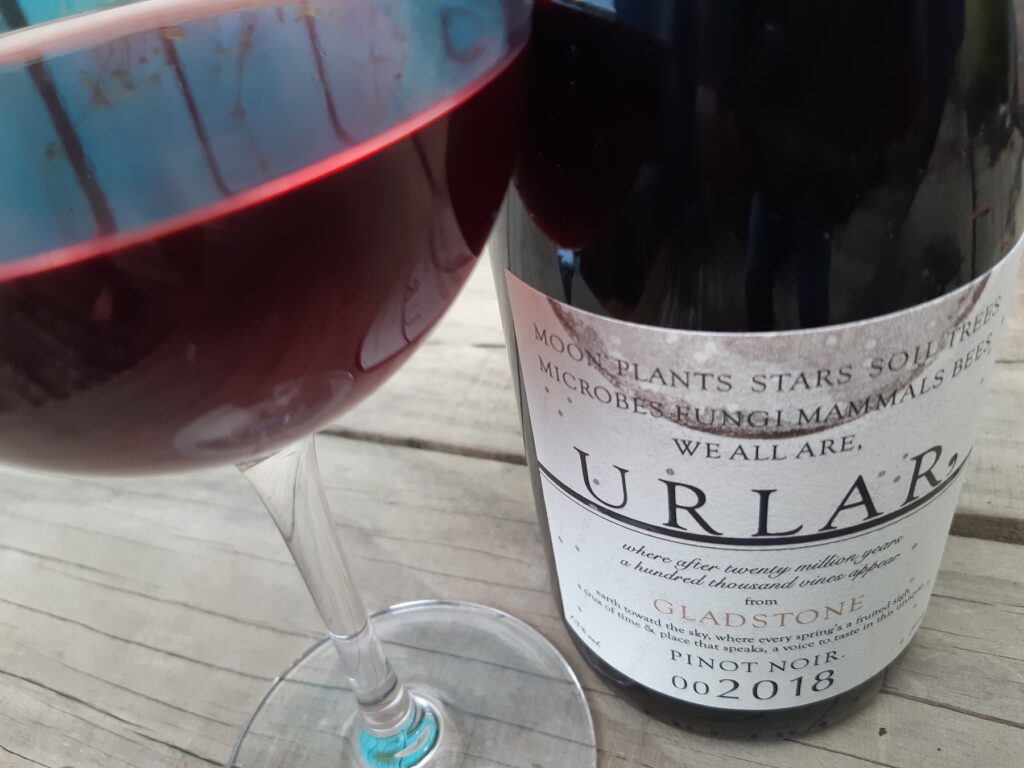
I’m lucky enough to get my Pinot Noir fruit from On Giants Shoulders. He’s a really talented, knowledgeable grower, and I he’s working with Ata Rangi now as well. This ’18 was all co-fermented – four clones: 10/5, Abel, 828 and clone 5. 40% whole cluster, 28 days on skins. The Pinot shows that Martinborough restrained, aromatic, savoury. I was doing a trade thing and had a bottle open that I tried the second day, and I really thought it improved.
This year was a bit different with space being tight. I was lucky we had a small team – 3 in the winery; and it was probably more stress for the Vineyard Manager, hand-picking, keeping distances and it was a pretty tense time. That first weekend we were right in the middle of our pick, and we also got 130mls of rain. Thankfully with the summer, and the drought there were really thick skins and handled that well. We just said ‘whoosh, let’s get it in’ – you don’t want to push your luck, but it was intense. The Wairarapa is small enough and we have a lot of local pickers that live here and are keen. We don’t have as many transient pickers as Marlborough or Central. One thing I love about being out in the regions is the diversity, and to some extent, the culture. It helps to visit – then you get an understanding.
WF: Well I really love to come and visit. I think even some of the people who’ve been around for a while, and might travel up to Auckland often themselves – it’s still nice when someone comes to your patch, to take the time to make those connections. And it’s my thing – even my wife, who is my favourite person to spend time with, isn’t really interested – so I go off and do it my way.
JR: My partner, Mick, is more of a beer drinker but he’s slowly getting involved in it. But if I have a group of friends round and they’re all wine friends, he’ll have to leave. He’ll say “you guys, you don’t know how intense you get, with these conversations about wine… lalalala and I’m not even there, so I might as well leave!”
WF: My wife just tells me to shut up. “David, stop talking about wine” and I’ll say “but Julia wants to hear about it” and she’ll say “Does she? Really?”. So I get to come away and indulge my love of wine.
JR: Yep, it’s pretty addictive. But I have to take time away. You can’t have a big night and then get up at 4 in the morning for a hunt. It doesn’t work.
WF: Didn’t really have the options to pursue that, growing up in the UK. It’s pretty tame. New Zealand really is the land of milk and honey, literally.
JR: But we need to look after it more.
WF: This is nice. Classic Wairarapa – savoury and heaps going on. Has it got Abel in it? It’s got that swagger to it?
JR: I think it’s a bit edgy on the palate, but in a complete way. Tannins are a bit sassy actually – yeah! For the ’19 we changed a little bit. We were making The Mediator, the Estate and the Select parcels, which is largely this wine.
Then for ’19 we’ve got The Mediator, the Estate as a premium wine, then just a very small, couple of barrels, bottling to go to Japan. This one is more of a barrel selection of this site, than the entire place. There’s a touch of reduction that bothers me on this wine.
WF: Doesn’t bother me, I could live with that. As long as it doesn’t harden up.
JR: I think it’s just the stage it’s at. We normally bottle just before harvest, but for the ’19 we decided we’d just keep it in tank. We often get that with screwcap, it just looks a bit awkward, but give it a couple of minutes and it seems to move on. It’s definitely a bit denser. We had terrible hail and flowering.
WF: the ’18 was much more generous. I liked the jazz that it’s got. That’s a cool wine.
JR: I love how every vintage is different. Nishi makes sochu and it’s very consistent. Trying to explain that grapes are a bit more finicky and variable, and seasonally we’re going to have these changes depending on what conditions we get.

